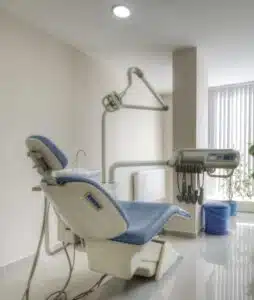New Smiles: Why Your Child Should See A Pediatric Orthodontist
Understanding the importance of pediatric orthodontics is essential for parents looking to ensure their child’s oral health and overall well-being. The term “pediatric orthodontist” might seem a bit specialized at first glance, but it holds the key to fostering a lifetime of confident smiles for your child.

These dental professionals are not only experts in aligning teeth and jaws but also in understanding the unique needs of children’s growing mouths. Early evaluation by a pediatric orthodontist can play a crucial role in identifying and addressing potential issues before they become more complex. This article delves into why taking this step is a significant and beneficial decision for your child’s dental journey.
What is a Pediatric Orthodontist?
A pediatric orthodontist is a dental specialist focusing specifically on the alignment of teeth and jaws in children and teenagers. This specialization involves additional years of training beyond dental school, focusing on the unique needs of growing mouths, and the psychological aspects of treating young patients.
Pediatric orthodontists are adept at handling the developmental changes that occur in children’s jaws and teeth, providing care tailored to each child’s growth patterns.
The primary distinction between pediatric orthodontists and general orthodontists lies in this specialized training and experience. While general orthodontists can treat patients of all ages, pediatric orthodontists dedicate their practice to working with younger patients, applying techniques and approaches that are most effective and comfortable for children and teens.
The Right Age for Your Child to See a Pediatric Orthodontist

Regarding the right age for a child to visit a pediatric orthodontist, the American Association of Orthodontists recommends that children have their first orthodontic evaluation by age 7. At this age, they have a mix of baby and permanent teeth, allowing the orthodontist to detect potential issues early.
Signs indicating that your child might need orthodontic care include difficulty in chewing or biting, early or late loss of baby teeth, and crowded or misplaced teeth. Observing these signs and scheduling a visit with a pediatric orthodontist can ensure timely intervention for optimal oral health and development.
Benefits of Early Pediatric Orthodontist Assessment
Initiating orthodontic assessments early for your child comes with significant benefits. The foremost advantage is the early detection of potential problems.
Catching Problems Early: Spotting issues like misalignments or bite problems early can prevent them from worsening.
Simpler Treatments: Early detection often leads to less complicated and less invasive treatments.
Guiding Jaw Growth: Early assessments can influence the development of the jaw, promoting better alignment.
Improved Oral Health: Addressing orthodontic issues early can lead to better overall oral health, reducing risks of cavities and gum problems.
Boosting Self-Esteem: Correcting dental issues early can enhance a child’s confidence, especially during their formative years.
Preventing Future Complications: Early orthodontic care can prevent more serious problems down the line, potentially avoiding the need for more extensive treatments in the future.
Customized Care: Early assessments allow for treatments tailored to each child’s growth and developmental stage.
Functional Benefits: Properly aligned teeth improve chewing and speech, contributing to overall well-being.
Visiting a pediatric orthodontist early in your child’s life is more than just a precaution; it’s a proactive step towards ensuring their long-term oral health and confidence. Embrace the journey to a healthier, happier smile for your child with the expert care of a pediatric orthodontist.
Common Orthodontic Issues in Children
Children can experience a range of orthodontic issues. Crowding is one of the most common problems, where there isn’t enough space in the jaw for all of the teeth to fit properly. This can lead to difficulty in cleaning teeth and potentially higher risks of cavities and gum disease. Another common issue is overbite or underbite, where the upper or lower teeth are too far forward or back, affecting the child’s bite and sometimes even speech.
Pediatric orthodontists have a variety of treatments at their disposal. Traditional braces are a well-known option, effectively aligning teeth by applying continuous pressure over time. In some cases, removable devices, like space maintainers, can be used for simpler problems or to prepare the mouth for braces.
Modern approaches also include clear aligners, which are less noticeable and can be a more comfortable option for some children. Each child’s situation is unique, and the pediatric orthodontist tailors the treatment plan to suit their specific needs and developmental stage.
How Pediatric Orthodontists Foster a Child-Friendly Environment
In our practice at Lasley Orthodontics, we place a strong emphasis on creating a child-friendly environment that eases the anxieties associated with dental visits. Our clinic is designed to be welcoming and engaging.
One of the key techniques we use is adapting our communication style to suit children. We explain procedures in a way that is easy to understand, often using fun analogies or simple stories. This approach not only helps in alleviating fears but also involves children in their dental health journey, making them active participants.
We understand the importance of a positive first experience in dental care. A child’s early interactions with their dental care providers are crucial in shaping their attitude towards oral health for life. Positive, engaging experiences build trust and a cooperative attitude, making future visits and any necessary treatments more manageable.
What to Expect During Your Child’s First Visit
Your child’s first visit is designed to be a comprehensive and engaging experience. During the initial consultation, we prioritize understanding your child’s dental history and needs. A comprehensive examination follows, ensuring comfort and effectiveness.
Parents can expect a detailed discussion about their child’s oral health, including any findings from the examination. We value parental involvement in decision-making for informed choices. Treatment plans and next steps are discussed. Additionally, we’ll outline potential treatment plans, if necessary, and discuss the best steps forward.
Conclusion
In essence, early orthodontic care benefits a child’s future well-being and confidence. Recognizing signs, understanding treatments empower parents to make informed decisions. Remember, a visit to a pediatric orthodontist, like Lasley Orthodontics, can set your child on a path to a healthy, beautiful smile. Embrace this journey with us – where every child’s smile is our mission.

